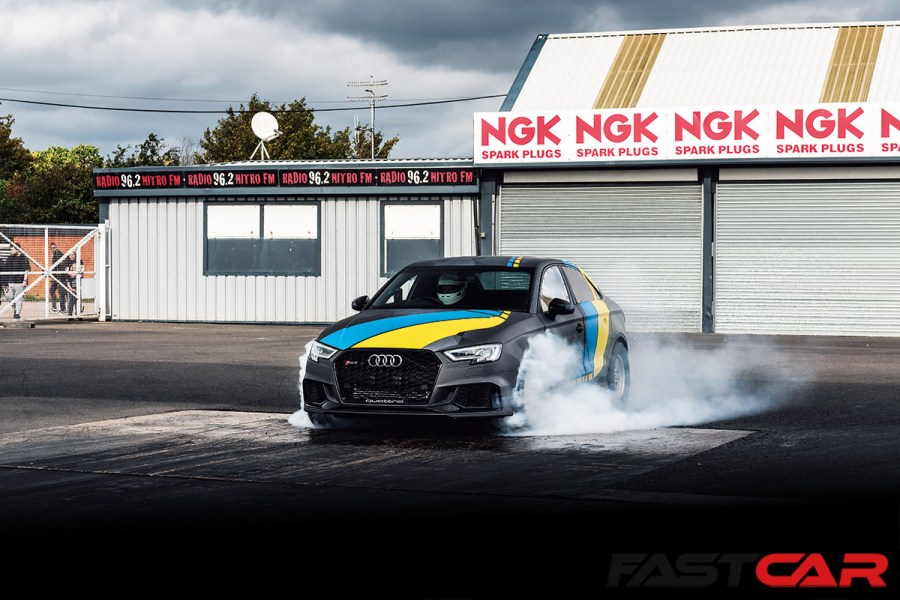Bought as a more tuneable replacement for his daily-driven S3, Dave Henderson’s modified Audi RS3 has evolved into one of the UK’s fastest drag cars – and he isn’t finished yet.
If you ask Dave Henderson to talk you through his next project, you might be surprised to learn how it all came about. At his workshop in Falkirk is an RS3 saloon shell project car, still mid-build but only a few months away from attacking the upper echelons of the Europe’s professional drag racing scene. It’s an ongoing evolution of everything he’s learned from this car, and that’s a long list. The evolution of what’s now Europe’s fastest Audi RS3 – a 1,300hp, 8.5-second, 165mph quarter-mile missile – began with Run What Ya Brung sessions just five years ago, and it’s fuelled by an irrepressible ambition to explore the limits of what’s possible.
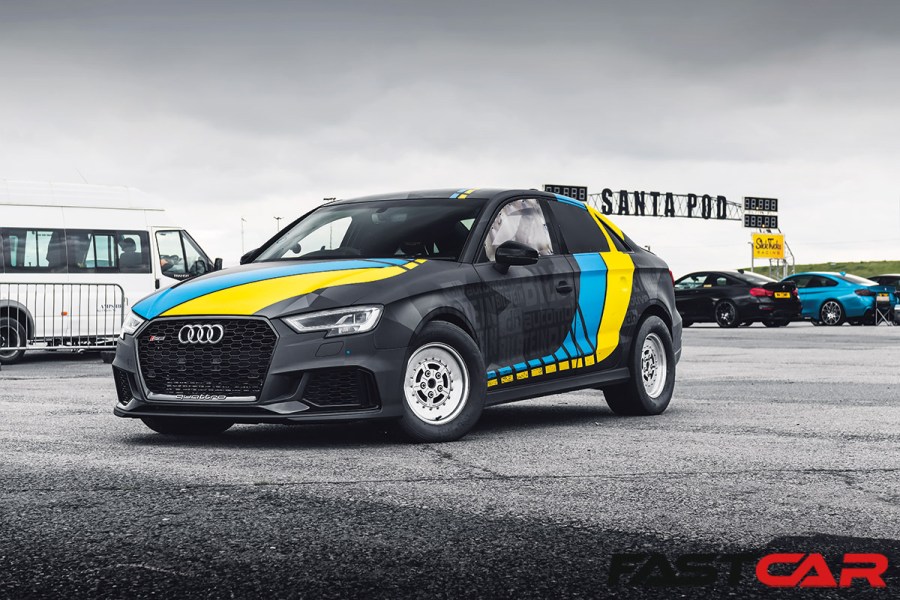
History of drag racing
“I’ve always gone drag racing, but it was more of a fun thing – family days out at Santa Pod, and having a laugh with friends,” he tells us. “However, I don’t do 50%, I’m in there. I’ve pushed forward and really got into racing with this car, and it’s got faster and faster. We’ve just ticked the 8.5-second box, so I’ve achieved my goals this year. Next year we’re building a new car, and the goal is sevens.”
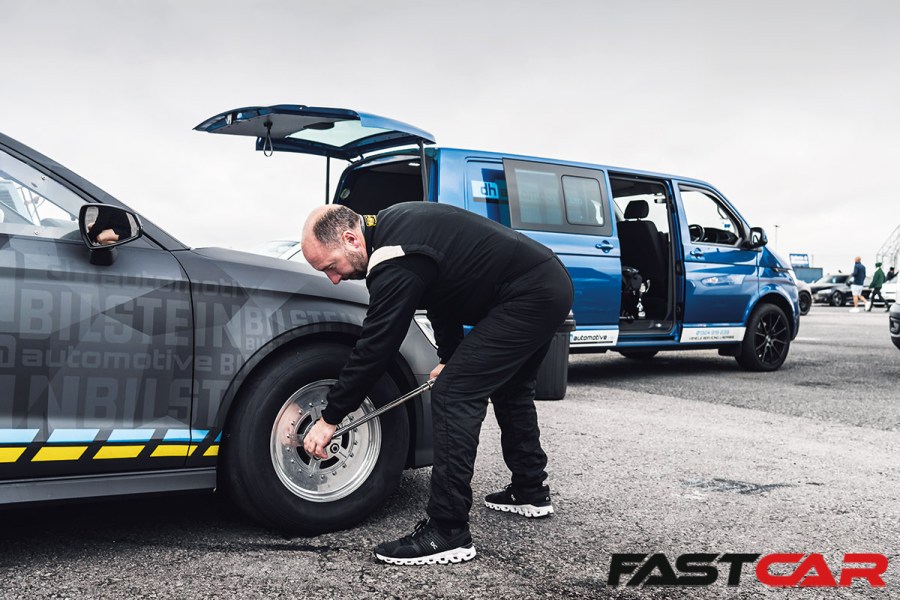
Some of the roots run deeper than the car itself. Dave has been a mechanic his entire working life, starting as an apprentice at his local Ford dealership over 30 years ago, and eventually branching out with his own business in 2016. DH Automotive has expanded quickly in the meantime, outgrowing its single-ramp garage in around six months, and a twin-ramp unit two years later. Equipped to handle everything from a basic service to a full engine build and dyno tuning, it’s as useful an environment as you could want for a project like this.
The rest was hard-wired into his personality. “Performance tuning is something I’ve enjoyed for my whole life,” he continues. “My first road-legal vehicle was a Mini, when I was 17. It started off as a basic 850cc, and ended up as a 1,340cc race-tuned engine and me driving it like a lunatic. So that’s where it all started, but later in life it’s always been Volkswagens and Audis.”
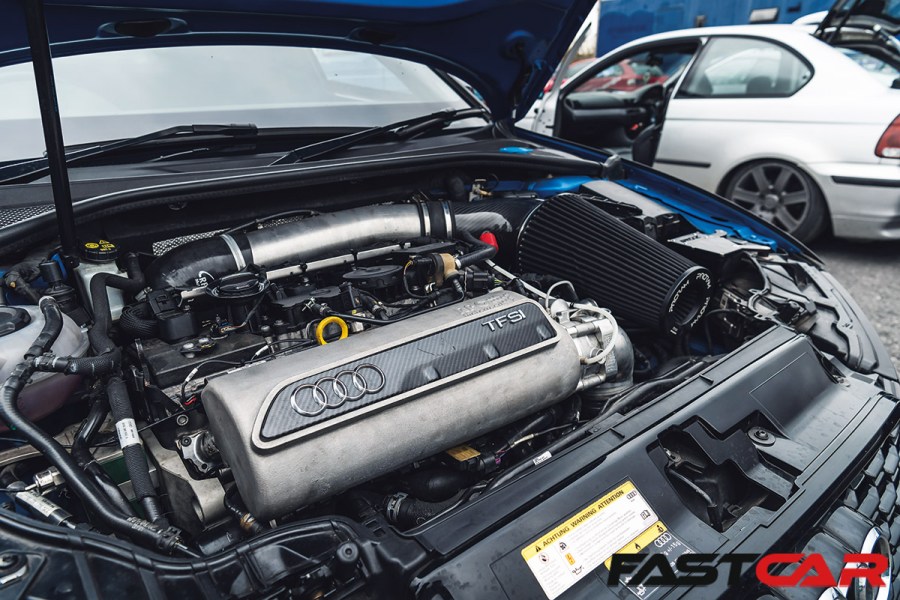
Pushing the boundaries
Modern, turbocharged engines have enabled him to up the ante. Back in 2017, Dave had wrung 600hp out of his daily driven 8V-generation S3 saloon and reached the limits of the parts available for it at the time. Having previously owned an 8P-generation RS3, the lure of a five-pot – and the noise and tuning potential that came with it – was too good to ignore. A combination of past experiences with the most potent engine in the A3 line-up, and the most aerodynamic body for it too.
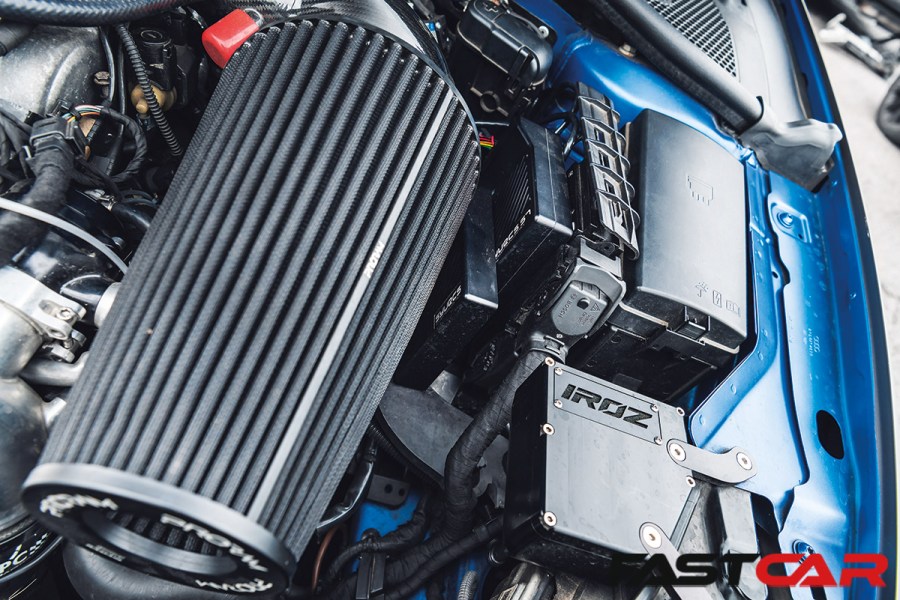
Initial tuning on the modified Audi RS3
The right base car came up for sale south of the border, still in factory tune and wearing the same Ara Blue as the S3 it replaced, but it didn’t stay that way for long. Working with MRC, the saloon quickly progressed through Stage One and Stage Two tuning kits as repeat trips to Santa Pod fuelled a need to push the engine further. With a year it had become Europe’s first nine-second RS3 and was under increasingly close scrutiny efforts focused on shaving fractions of a second from its quarter-mile times. Stock internals turned out to be tough enough foundations to push what was, at the time, his daily drive to 710hp and 820Nm with the help of a TTE700 turbo. Hardly shabby, but Dave wanted more.
“It got to the stage about three years where everything got a bit more serious. I used to go down to Santa Pod with a full interior in the car, strip it out at the track, change the wheels and drain the tank to run race fuel, then I’d put it back together to drive home. Then for the last few seasons we’ve started running the car competitively in the VWDRC and won the Heads Up class two years running,” he says.
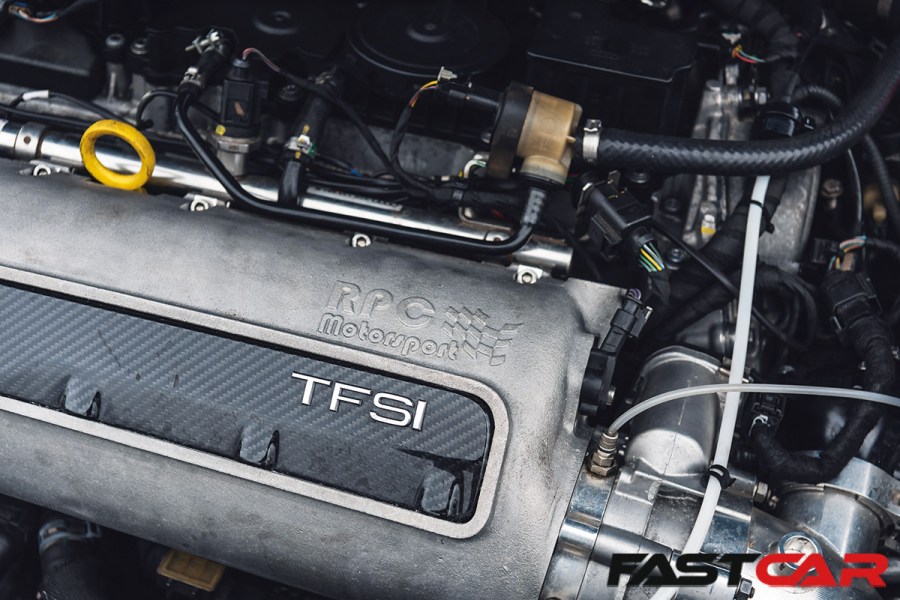
Engine swap for the modified Audi RS3
There is no easy route to the top of that class. Unwilling to pull the still-solid factory engine apart, Dave put it into storage having assembled something better suited to the task ahead. It’s based on the same DAZA inline-five, but that’s where the similarities stop. The block has been overbored slightly and superfinished – a fine polishing that reduces friction – then fitted with water-cooled cylinder liners, uprated pistons and rods and a balanced crank ready for the extra power. Up top, the head was fully rebuilt by Race Developments and is paired with the largest turbo in the RPC Motorsport catalogue.
“The new five-cylinder engines are a lot easier to tune,” he explains. “The 8P RS3 had a cast block with five injectors, but the new ones have ten injectors and an ally block – which is relatively soft, so you do have to be careful with them. We’ve pretty much maxed the turbo I have but we’re still evolving, and a lot of that is down to fuelling. It’s still using the stock direct injectors, but turned right down, and we’ve upgraded to 2,600cc port injection to give the car the fuel it needs.”
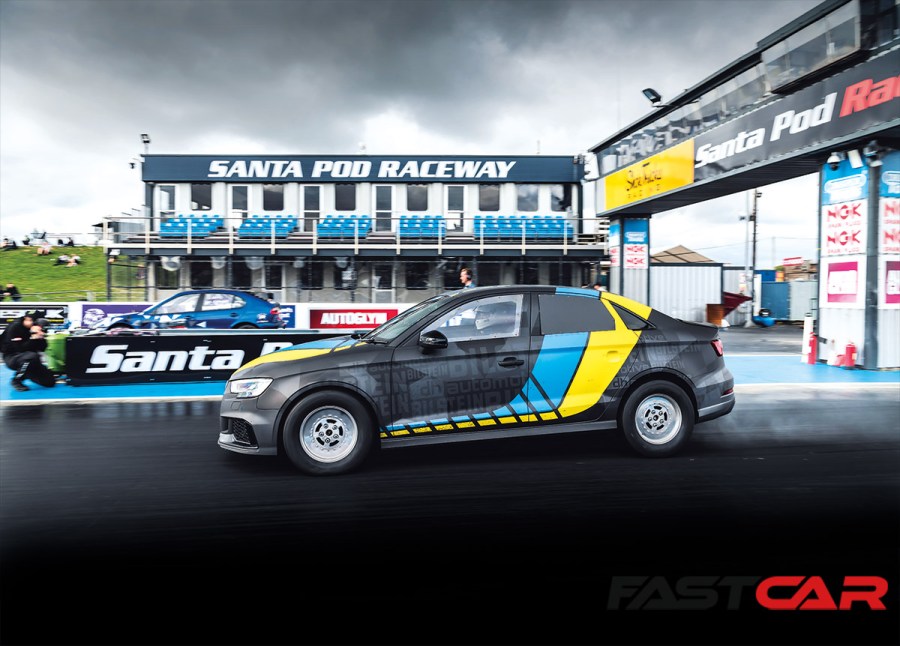
Upping the ante
Naturally, this has required some specialist support. After an injector issue at the start of 2022 left Dave with a melted piston, the most recent game-changer is upgrading to Syvecs management as part of the rebuild. It’s been a foundation for pushing the envelope even further. Having been dynoed at 1,120bhp during the spring, a season of trackside fine-tuning with help from Stijn Jacobs of 4 Strokes Performance has wrung even power from the saloon’s monster five-pot. There’s no dyno graph to prove it, but the resulting quarter-mile times tell you everything you need to know.
“It gets a lot harder when you’re pushing for hundredths of a second, but Stijn is a wizard with what he does so we’ve got faster and faster. We flew him over for GTI Festival at Santa Pod and we did a late-night run at 8.6 seconds while racing in competition, so we won the event. Which was nice,” smiles Dave.
“People have said, with the times it’s doing, it’s probably got a couple of hundred horsepower more than it had on the dyno – so that’s more than 1,300hp. However, all of the tuning has been done at the track, so it’s hard to be sure.”
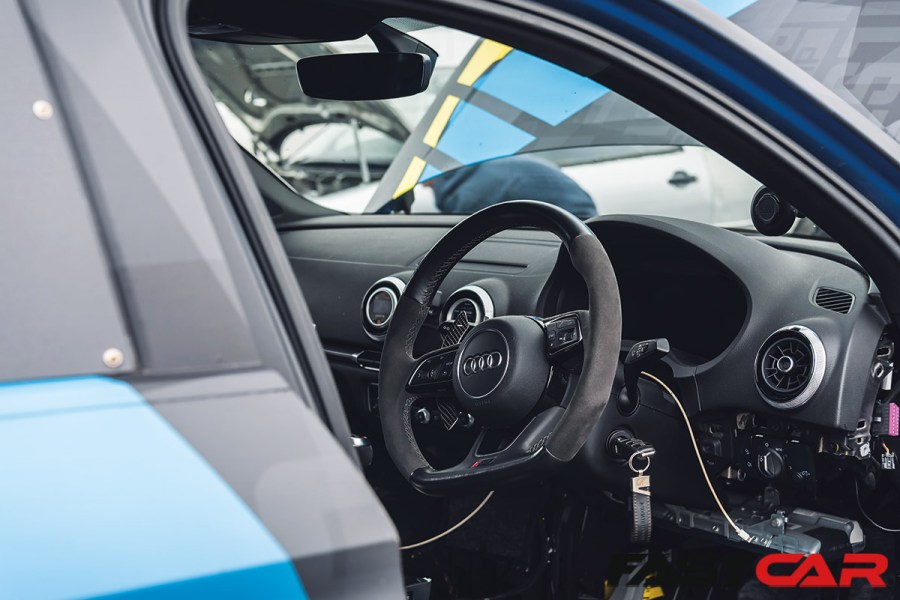
Transmission upgrades
There’s an impressive amount of factory hardware tasked with translating that tyre-wrinkling, flame-hurling lunacy into straight-line speed. The driveshafts and propshaft are stock – and apparently tough enough to withstand 1300hp, slick tyres and treated asphalt – while the RS3 came factory fitted with Volkswagen’s strongest DQ500 dual-clutch transmission, which has also survived several seasons of racing without complaints. Dave added Wavetrac limited-slip differentials front and rear with uprated clutches and aftermarket management, but Audi’s engineers clearly knew what they were doing with the rest.
“These cars are predominantly front-wheel drive until they sense a bit of slip, then the rear engages. We use a Syvecs Haldex controller at the rear, which brings the clutches together during a more aggressive push forward, and the differential means we’re not spinning one of the wheels like we were before. It’s really optimised the way the car launches,” he explains.
“It hasn’t missed a beat in two years of racing, and I think it’s testament to using quality products. Every time it comes back from a meeting, we change all the fluids in the engine and transmission. If you go out and run a marathon then you’ve got to replenish your fluids and a car is no different after it’s been beaten to within an inch of its life.”
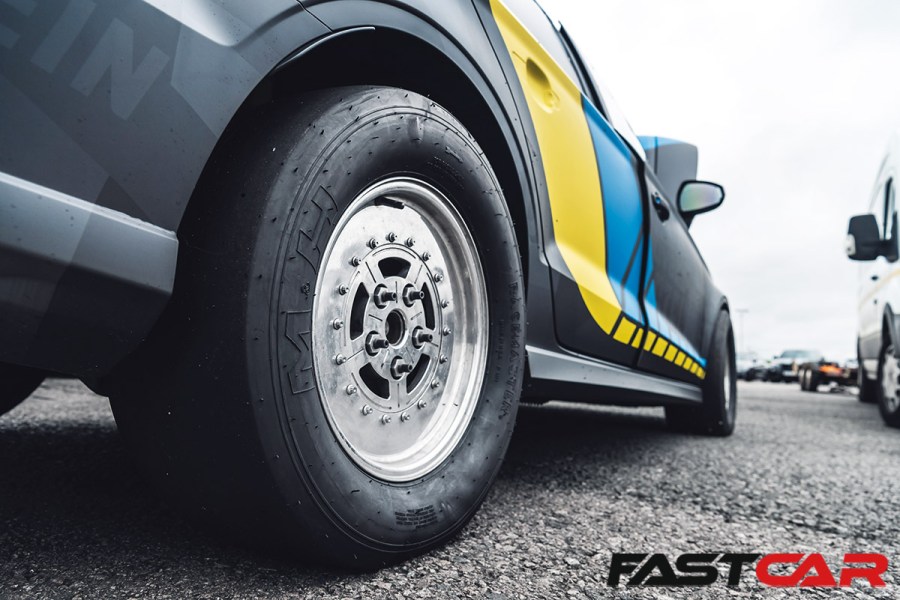
Chassis modifications for the Audi RS3
Previous experience highlighted where the MQB platform had shortfalls, and the spec is equally optimised here. The aluminium front and rear subframes are stock, but no longer have anti-roll bars, and Dave worked with Bilstein to develop a bespoke suspension setup for the strip. Through a process of trial and error, testing multiple different spring rates and re-valving the shocks, the finished setup dials out excessive squatting off the line without making the car unusable on the road. Yes, it’s still street legal.
Of course, building a road-legal dragster throws a few unusual challenges into the mix. The wheels were computer-designed for the car, fitted with 10-inch barrels and 26-inch M&H slicks, but the biggest clearance issues aren’t on show. Audi equipped the RS3 with 370mm front discs and 310mm at the back, but they were too large. Dave switched to 13-inch vented discs with six-piston Wilwood calipers up front, while the rear setup was lifted from a diesel Golf.
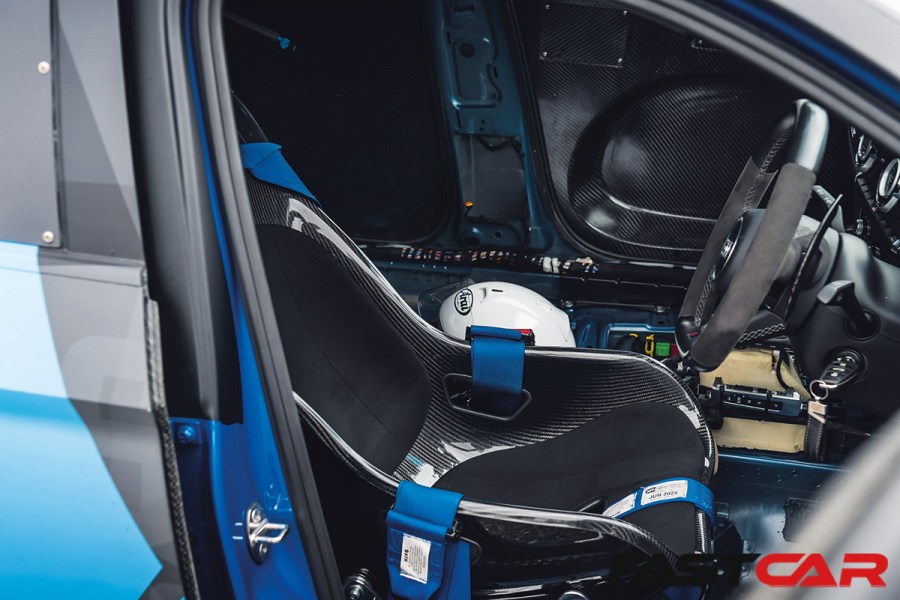
Exterior and interior mods
Despite the excessive horsepower on tap, none of that performance was wasted on creature comforts. Swapping steel doors and glass windows for Mcomposit carbon fibre and polycarbonate shaves 63kg from the Audi’s kerb weight, while the bootlid sheds another 9kg. Most of the RS 3’s luxurious interior has also been stripped out, including half of the dashboard and everything below the shoulder line except for the airbags. Aside from the carbon fibre Tillett bucket seat and harnesses, there isn’t much left.
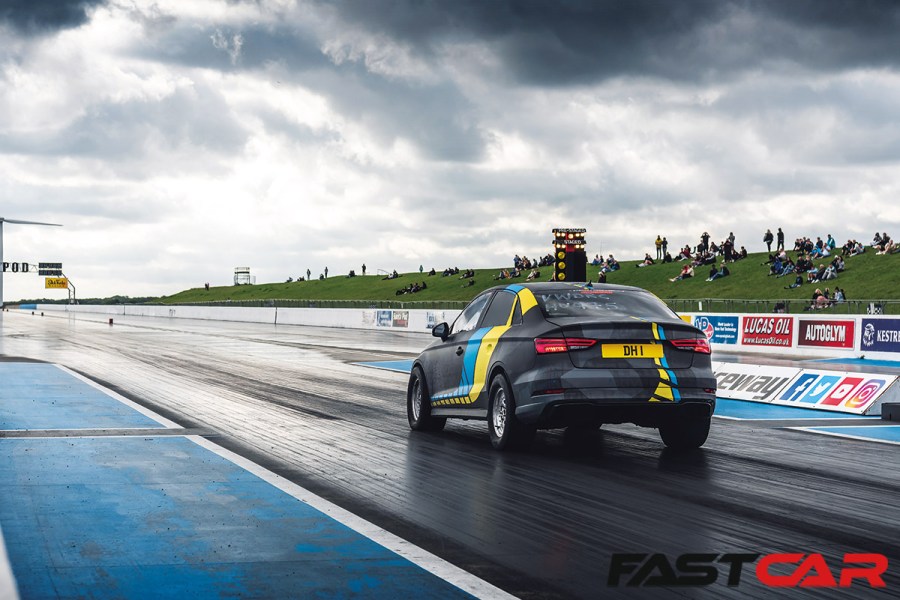
Modified Audi RS3 performance figures
The result of that aggressive strip-down is a car that weighs just 1,331kg with 5kg of fuel on board. For perspective, that’s similar to a 2.0 TDI A3 saloon, but with nine times more power. It’s also enough to close the 2023 season with an 8.6-second, 165mph personal best at Santa Pod’s Flame and Thunder weekend– or 8.751 seconds measured on the Dragy app. This was a turning point, as Dave explains.
“This year we’ve got to the stage where, because we’re almost in the mid-eights, I can’t run in the Pro class because I need a cage and a parachute. We’re in excess of 160mph and I’ve seen a few crashes recently so I’d like that bit of safety, but if I put a cage in this one then it’s solely a drag car. Instead, I’ve bought an RS3 shell from a breaker and Robinsons Race Cars has fitted a full 7.5-second FIA cage. We’ll replace all the panels with carbon fibre to make it as light as possible and see where we go with it. Onwards and upwards, as they say…
Naturally, stepping away from road-legality is an opportunity to push even harder on the mechanical side. The engine that’s taken this car to its pace-setting quarter-mile times will live on in the new shell, rebuilt with a thinner head gasket, larger RPC Motorsport turbocharger, nitrous shot and an exhaust that ends with an outlet in the front bumper.
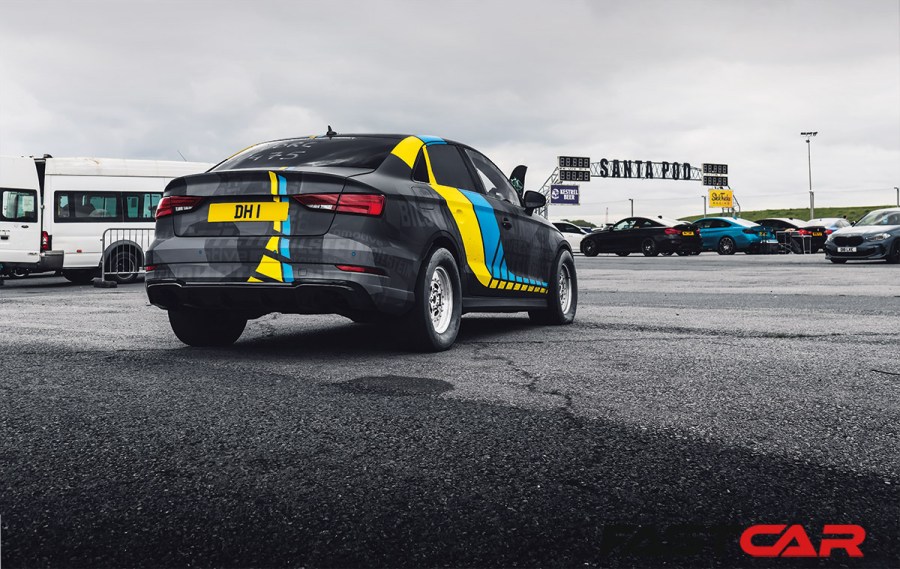
What’s next for the modified Audi RS3?
And this one? By the time you read this there’s every chance you won’t recognise it at all. Set to be reunited with its original engine, the modified Audi RS3 will get a second life as a fast-road machine – standard visually but built to Stage Two spec up front. It’s as much of a sleeper as Audi’s performance saloon could ever be and, ironically, not a bad foundation for Run What Ya Brung days. Maybe it hasn’t seen Santa Pod for the last time.
“I’m still just having fun,” shrugs Dave. “Drag racing plays a big part in the business, but it’s also a huge part of my social life – all of the boys from work come, and so does the family. It’s just that now I’m pushing the boundaries. That 16-year-old petrolhead is still in there, realising I can still go faster, so let’s do it. We’re entering the realms of the unknown next year but, as I always say, every day is a school day.”
An intensive school day at that. In a little over five years, what started as a step up in the performance stakes has propelled Audi’s smallest RS model into the upper echelons of Europe’s drag racing scene. Soon to have a Pro-spec car at his disposal, getting into the sevens is a next step rather than the final target. Given the ambition he’s shown so far, we’ve got a feeling there’s plenty of potential left to explore.
Be sure to check out Performance VW magazine for more features like this. Words: Alex Grant. Photos: Nick Williams.

